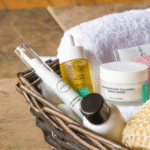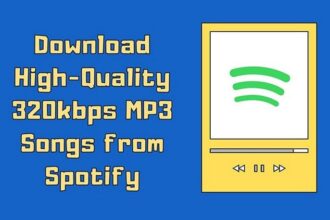Image from Unsplash
Starting a blog used to be as simple as sharing your thoughts with the world. But today, UK creators are evolving into full-fledged content entrepreneurs, turning niche audiences into profitable brands. Whether you’re building a lifestyle blog, a pop culture review hub, or a creator-led digital magazine, the line between “content creator” and “brand owner” has never been more blurred.
As the creator economy flourishes, services like Printmoz offer simple, scalable solutions to help bloggers transition into branded businesses, from custom merchandise to marketing collateral. In this guide, we’ll explore how to take your media channel from hobbyist to professional, while building long-term visibility and revenue in the UK market.
1. Establishing Your Niche and Identity
Before you can grow a brand, you need clarity on what your blog stands for. The most successful UK-based personal media channels lean into a niche, whether that’s streetwear fashion, alternative wellness, indie film reviews, or life in the Scottish Highlands.
Ask yourself:
- What specific problem or interest does your blog address?
- Who is your ideal reader or viewer?
- What tone, values, and visual style define your presence?
Defining these early helps set a cohesive foundation for expansion. Your brand is more than a logo, it’s a consistent experience that your audience learns to trust and recognize.
2. Monetizing Beyond Ads: Products, Subscriptions & Partnerships
Many bloggers start with affiliate links or ads, but true brand growth requires diversification. Consider these income streams:
● Physical Merchandise
Selling branded products is a natural step for media channels with loyal followings. Think of custom notebooks, T-shirts, mugs, or tote bags that align with your niche. UK bloggers in travel or self-help, for instance, often bundle journals or themed guides. Services like Printmoz streamline this process by handling printing and shipping, letting you focus on design and marketing.
● Digital Products
E-books, checklists, templates, or online courses provide high-margin revenue for thought-leaders in niches like finance, fitness, or creative writing.
● Subscriptions & Memberships
Platforms like Patreon or Ko-fi allow readers to support your work monthly. Offering exclusive content, Q&As, or community access can incentivize long-term support.
● Sponsored Collaborations
As your brand grows, brands will want access to your audience. Sponsored posts or video collaborations can be lucrative, but should always align with your voice and audience interests.
3. Building Brand Assets That Reflect Your Blog’s Vision
Transforming a blog into a brand requires visual and strategic consistency. Here’s where your branding must extend beyond your blog layout.
Essential Assets Include:
- A professional logo and color palette
- Media kit outlining your reach, audience demographics, and content style
- Branded merchandise or packaging to amplify your identity offline
- Templates for social posts, emails, and digital banners
Physical brand assets like signage, packaging, or merchandise can be ordered in bulk via online printers. According to gov.uk’s guide to starting a business, building brand recognition is vital in crowded markets, and strong visual assets can help you stand out from generic competitors.
4. Scaling Visibility Through Multi-Platform Content
Your blog is home base, but growth comes from meeting audiences where they are. UK creators have found success repurposing blog content into:
- Instagram carousels or Reels
- YouTube explainers or behind-the-scenes videos
- TikTok micro-content
- Pinterest guides and infographics
- Weekly email newsletters with curated links
This approach builds brand awareness across different audience segments. Tools like Buffer or Hootsuite make scheduling easier, while Canva allows consistent visuals for multi-platform branding.
Cross-promotion helps bring readers back to your main platform, growing your traffic and improving SEO over time.
5. Developing Authority and Trust in Your Niche

Image from Unsplash
Trust is currency in the content economy. To build credibility:
- Showcase testimonials or case studies (if offering services)
- Collaborate with other creators in similar spaces
- Provide consistent value before asking for sales
- Be transparent about paid promotions and affiliations
- Publish long-form content that positions you as a thought leader
Bloggers who become respected voices in their niche can land media features, speaking gigs, and lucrative collaborations.
For example, many UK-based bloggers tap into events like London Creator Fest or BlogCon UK to network and learn best practices, these spaces often open doors to visibility that pure SEO won’t achieve.
6. Streamlining Operations with the Right Tools
Running a media brand means juggling many hats: writer, editor, designer, marketer, and sometimes accountant. Smart tools reduce your workload and allow you to scale:
- WordPress with Elementor or Ghost CMS for content publishing
- ConvertKit or MailerLite for newsletters and automations
- Stripe or Gumroad for payment processing
- Printmoz for print-on-demand products or shipping branded materials
- Xero or QuickBooks for tracking income and tax filings (a must if you’re earning as a sole trader or Ltd company)
The right stack not only saves time but prevents burnout as your brand scales.
7. Preparing for Legal & Financial Legitimacy
If you’re earning money or selling products in the UK, it’s essential to set up your business properly. You’ll need to:
- Register as a sole trader or limited company with HMRC
- Track all income and expenses
- Follow GDPR and ASA guidelines for data privacy and advertising
- Use proper contracts for sponsored collaborations
These steps protect both your brand and your customers. As noted in UK government guidelines for setting up a business, choosing the correct structure and understanding your responsibilities is key for long-term success.
8. Staying Authentic While Growing
Lastly, the most successful blog-to-brand transitions maintain authenticity. Your readers follow you for your unique voice, not just polished visuals or monetized content.
Here are ways to stay grounded:
- Continue engaging in comments and DMs personally
- Share behind-the-scenes stories or struggles
- Include reader feedback in product development
- Stay transparent about changes in your business model
This human element keeps your community invested as you scale from a solo blogger to a full personal media brand.
Growing a personal media channel into a recognized brand is more accessible than ever, but it takes intentional strategy, reliable tools, and a clear vision. With platforms like Printmoz supporting your physical branding needs and a wide range of tools available to streamline your operations, UK bloggers are in a prime position to transform their passion projects into sustainable, profitable businesses.
Whether you’re selling merch, launching digital products, or building a loyal subscriber base, the time to scale is now, and your audience is ready to support your journey.

















